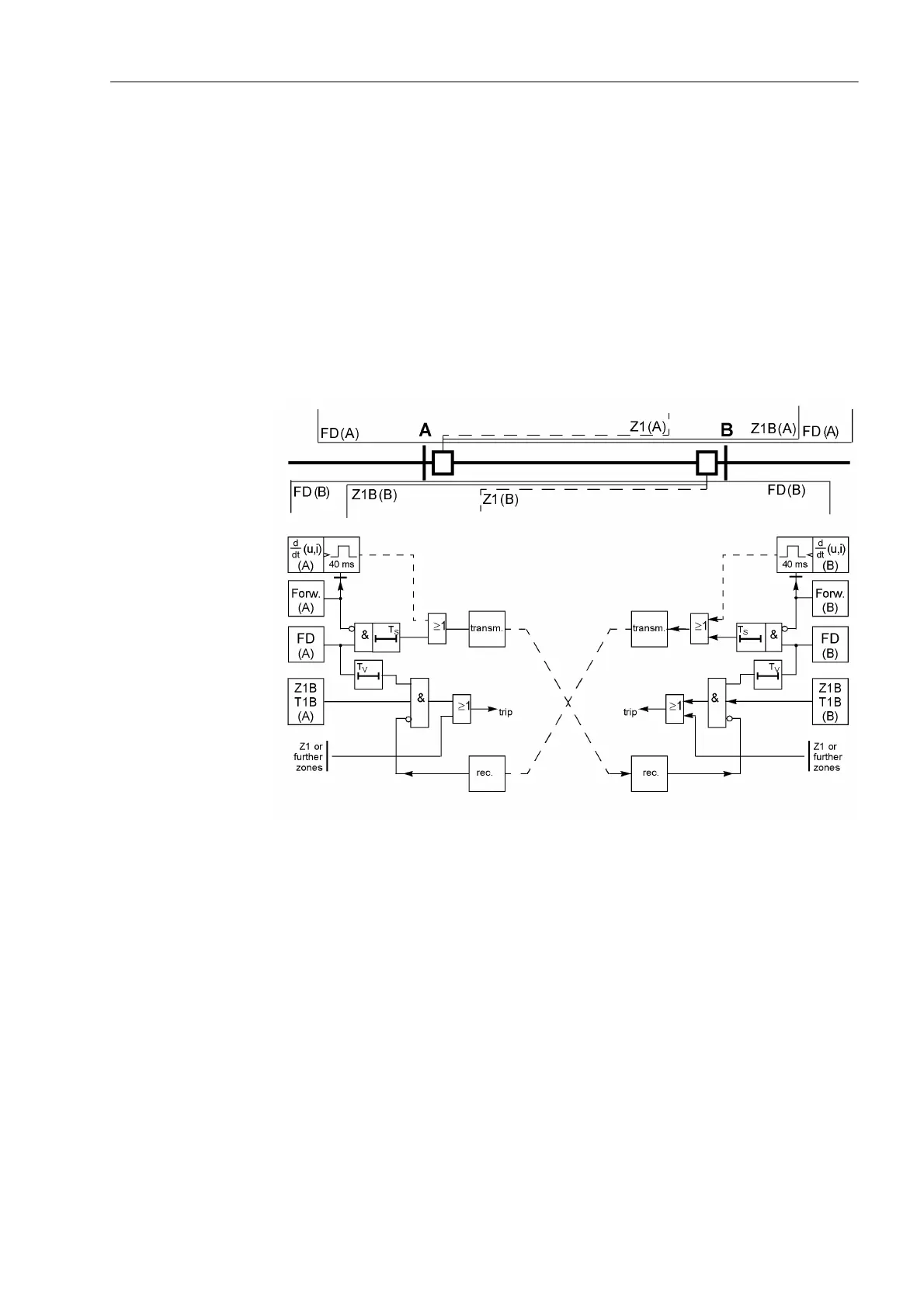2.6 Teleprotection for distance protection
141
7SA522 Manual
C53000-G1176-C155-3
and the attenuation of the transmitted signal at the fault location may be so severe that
reception at the other line cannot necessarily be guaranteed.
The scheme functionality is shown in Figure 2-58.
Faults inside the overreaching zone Z1B, which is set to approximately 120% of the
line length, will initiate tripping if a blocking signal is not received from the other line
end. On three terminal lines, Z1B must be set to reliably reach beyond the longer line
section, even if there is an additional infeed via the tee point. Due to possible differ-
ences in the pickup times of the devices at both line ends and due to the signal trans-
mission time delay, the tripping must be somewhat delayed by T
V
in this case.
To avoid signal race conditions, a transmit signal can be prolonged by the settable time
T
S
once it has been initiated.
Figure 2-58 Function diagram of the blocking scheme
Sequence Figure 2-59 shows the logic diagram of the blocking scheme for one line end.
The overreach zone Z1B is blocked which is why it must be set to )RUZDUG (address
2SPRGH=%, see also Subsection 2.2.1 at margin heading “Controlled Zone
Z1B”).
On two terminal lines, the signal transmission may be phase segregated. Send and
receive circuits in this case are built up for each phase. On three terminal lines, the
transmit signal is sent to both opposite line ends. The receive signal is then combined
with a logical OR gate as no blocking signal must be received from any line end during
an internal fault. With the setting parameter 7\SHRI/LQH (address ) the
device is informed as to whether it has one or two opposite line ends.

